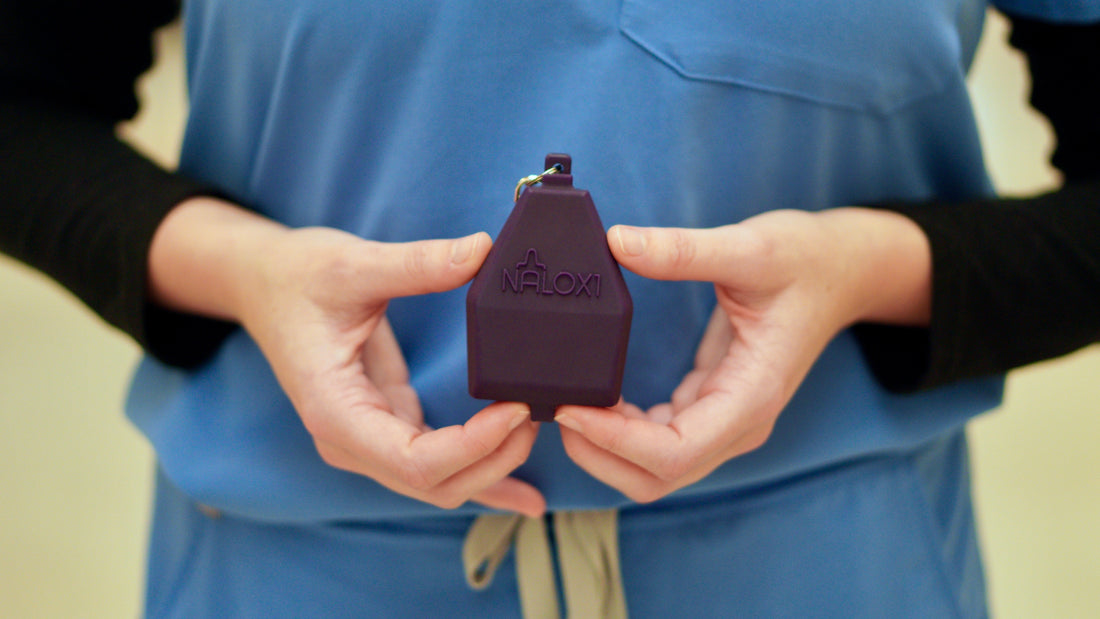
Why Don’t More People Carry Naloxone? Here’s What We Heard and What We Can Do About It
Share
At nCase, we’ve spoken with hundreds of people across different communities. We kept asking the same simple question:
“If naloxone is free and it saves lives, why don’t more people carry it?”
The answers we heard were honest and deeply personal. But they also pointed to larger issues that we need to talk about.
Two responses came up more than any others:
-
"It’s too difficult to carry."
-
"I’m afraid of what people will assume if they see me with it."
These aren’t just excuses. They’re real concerns. And they reflect what researchers are seeing too. In fact, a peer-reviewed study found that people often turn down free naloxone or choose not to carry it, even when they know it could help someone in an emergency.
So why is this happening? And what can we do about it?
Let’s take a closer look at what’s behind these barriers and how we can help more people feel confident and comfortable carrying naloxone.
Barrier #1: “It’s Too Difficult to Carry”
While the nasal spray version of naloxone, like Narcan, is fairly small, a lot of people told us they still find it awkward to carry. Some were worried it might get crushed in a pocket or bag. Others weren’t sure how long it would last or how to store it properly.
That’s exactly why we designed the nCase Narcan Keychain Case. It is lightweight, discreet, and protective, so you can keep naloxone with you at all times. Whether you clip it to your keys, keep it in your backpack, or slide it into your pocket, it is built to be simple and secure.
Sometimes a small design change can make a huge difference. Naloxone only saves lives if it is actually there when someone needs it. Carrying it just got easier.
Barrier #2: “I’m Afraid of What People Will Think”
This response gets right to the heart of the issue: stigma.
People shared real concerns with us:
"People will think I use it."
"What if I get searched and the police see it?"
"I don't want to be judged."
These fears are understandable. According to a study published in JMIR, many people hesitate to carry naloxone because of the stigma tied to drug use, fear of being misunderstood, and worries about possible legal trouble.
But this way of thinking needs to shift.
Carrying naloxone is not about who you are. It is about what you are willing to do if someone near you is in danger. When someone carries an EpiPen, which is a device used to treat life-threatening allergic reactions, we do not make assumptions about them. The same should be true for naloxone. Carrying it shows that you care about your community and want to be prepared. That is something to respect.
If a person steps in and reverses an overdose, they are not just helping someone in crisis. They are stepping up as a public health advocate. That should be seen as an act of courage and compassion, not something to judge.
Other Important Barriers People Shared
The research also revealed a few deeper reasons why some people avoid accepting or carrying naloxone. These went beyond just convenience or stigma and pointed to emotional and social concerns that many don’t talk about openly.
Here are a few examples:
-
Indifference or detachment: Some people said they did not feel it was their responsibility to carry it or step in during an overdose.
-
Fear of misreading the situation: There was a worry about not recognizing when someone actually needed naloxone.
-
Fear of triggering withdrawal: Some hesitated because they were afraid the person waking up might become sick or angry.
-
Fear of legal trouble or police involvement: This was especially common in neighborhoods that are already heavily policed.
These are all very real concerns, and they highlight why the way we talk about naloxone matters. Clear, honest messaging should help people feel confident in carrying it, remind them that anyone can overdose, and reinforce the fact that naloxone cannot harm someone. It can only help.
If you want to see how different communities are addressing these challenges, check out this article on how communities are using naloxone carry cases to promote safety. It shows how simple tools and thoughtful messaging can make a big impact.
Rewriting the Narrative
Let’s be clear: carrying naloxone is not a red flag. It’s a badge of responsibility.
-
You don’t have to use opioids to carry naloxone.
-
You don’t have to be a first responder to save a life.
-
You don’t have to announce it — just be ready.
By reducing barriers like inconvenience and stigma, we can help normalize carrying naloxone — and empower people to step up, not stand back.
If you're looking for a safe and easy way to carry naloxone, check out our Narcan Keychain Case. It's designed to help make carrying second nature.
Carrying Is Caring
Whether you use opioids, know someone who does, or simply care about your community, carrying naloxone could help save a life. That might be the message we all need to hear more often.
You may never need it. But if someone does, you will be ready to help.
Let’s work toward making naloxone as common and accepted as CPR. Let’s make it normal to carry tools that protect others. Let’s make compassion easier to carry.


